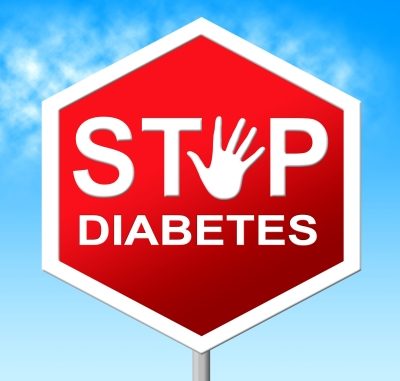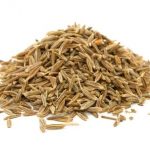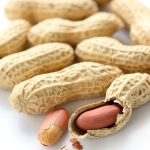
- Diabetes mellitus or just diabetes as we tend to call it is the condition that causes people to lose control of the amount of sugar in their blood.
Diabetes is one of the major debilitating diseases of the world and is affecting a large portion of the global population. The condition relates to the way our body is able to make use of the energy in our food.
The condition occurs because the body is unable to respond to a hormone called insulin which is made in the pancreas. When the tissues in our body no longer respond to insulin or we do not make any of this hormone, the levels of sugar in the blood rise. The consequences are very serious if the condition is left untreated.
The major health complications are:
- kidney failure
- nerve damage
- heart disease
- stroke
- coma
Being able to control our blood sugar levels is vital to avoid such medical problems. Many of the articles on this web-site which discuss traditional medicines, beverages and foods will have a section that concerns whether they have a benefit in diabetes management or not. It seems important enough to write about this condition in its own right.
A Brief Description On The Types Of Diabetes
Three types of diabetes occur, type 1 and type 2, and gestational. Type 1 and 2 diabetes are chronic conditions. These particular types are with us for much of our lives if not lifelong. Gestational diabetes is a temporary phenomenon which occurs in women during their pregnancy. Type 2 is the most common form but fortunately one which is also more manageable.
Throughout the world there is a prevalence of diabetes in various populations. The Brussels-based International Diabetes Foundation believes the current number of people with the disease is 415 million. It is estimated there will be 439 million people affected by 2030 with the disease and 642 million people will have the condition by 2040 (Chatterjee et al., 2017). Diabetes is found in 9.7 percent of Chinese adults (Zhang et al., 2017). In the UK, over four million people have diabetes with 90 per cent having type 2. It is thought that around one million in the country have diabetes without even realising it.
Diabetes is currently the sixth most common cause of morbidity and mortality affecting both young and middle-aged people.
Metabolism Of Glucose
There are a number of features of diabetes which are common to all three. We metabolise carbohydrates and sugars. All these energy molecules are broken down to one particular type, glucose which is a universal energy compound. Whilst this is a simplistic assessment of where our energy sources come from, this particular sugar is most often or not, the fuel our cells use. For this energy to be used by cells requires a signal provided by the hormone insulin. With diabetes, we either simply do not make enough or when we do, the cell cannot recognise the signal or a combination of both.
If we cannot make use of the glucose, the levels of this sugar simply build up in the blood stream. High levels of blood glucose cause damage to our blood vessels, especially the small ones in the kidney, heart, eyes and nervous system (Fowler, 2008).
We might know we have diabetes but there are a few characteristic symptoms (Wang et al., 2017). These symptoms are usually in more medical parlance described as:-
- loss of weight which is unexplained,
- tiredness,
- a raging thirst (polydipsia),
- urinating too much (polyuria),
- excessive eating or appetite (polyphagia),
- high plasma concentrations of glucose (hyperglycemia),
- urine containing glucose
Medical Conditions Associated With Diabetes
Untreated diabetes leads to a number of severe medical conditions many of them acute. These include:-
- stroke and heart or cardiovascular disease,
- kidney diseases,
- blindness and nerve damage especially in the feet but also the hands,
- often a raging thirst,
- gum disease and a host of other related issues
- genital thrush
In some cases the situation is so severe, coma or nonketoic hyperosmolar coma occurs and then death.
Not everybody will experience the symptoms or the conditions. It is often described as a ‘silent’ disease. Loss of sensation in the feet is sometimes coupled to foot ulceration and gangrene. In many cases, hypoglycemia means the plasma glucose concentration has dropped to far too low levels. In a few cases, the use of glucose is so severely affected that one of the symptoms is the presence of keto acids on the breath such as butyrate. Whilst these are sometimes present in those on a severely restricted carbohydrate diet, the unpleasant aroma from ketoacidosis is not attractive.
Diabetes is also strongly associated with an increased risk of Alzheimer’s disease (AD) and with various memory deficits.
To understand the complications arising from diabetes, simply look at the web-site for the American Diabetes Association and read how critical care is when living with this condition (ADA, 2014).
The cells which produce insulin are found in the pancreas. They are known as the β cells and any impairment here is responsible for the condition of type-1 diabetes.
Type 2 diabetes occurs when the cells using glucose for energy simply do not respond to the presence of insulin.
Nerve Damage (Neuropathy) And Diabetes
One of the consequences of extended diabetes of both types is the development of nerve damage (neuropathy). It occurs because of metabolic disruption to nerves which is linked to changes in fatty acid metabolism. The effect is most marked in the peripheral nervous system.
The damage produces changes in the anatomy of the nerve which in turn produces reduced conduction velocity i.e. nerve impulses simply do not travel as fast. The reduced nerve conduction velocity is associated with a drop in Na,K-ATPase (Gerbi et al., 1999). .
An early warning sign is bad breath
Bad breath is an early warning sign of high blood sugar. Halitosis occurs when there is a build up of bacteria living in the mouth which leads to a build up of dental plaque. People with diabetes have higher levels of sugar in their mouth which produces the perfect feeding ground for any bacteria. This eventually leads to bad breath as the bacteria produce gases. The plaque bacteria live in between the teeth and on the surface of the tongue. They digest glucose and other food particles which then lead to the release of foul-smelling gases.
The Biochemical Issues Of Diabetes
Hyperglycemia (raised blood glucose levels) is a pathogenic factor of diabetes mellitus. The high blood glucose levels not only generate excessive free radicals but also attenuate the antioxidative machineries through glycation of the antioxidant enzymes. This means a number of enzymes in the cell are damaged by binding glucose to them, as is the case to with transport proteins like haemoglobin (Pal et al., 2014).
Being Overweight Is An Issue !
The Danish Health Authority established that up to 85 per cent of newly diagnosed patients with type 2 diabetes were overweight. Losing weight through the diet is one of the best options. There is a particular food group which could be focused on according to researchers which would help keep blood sugar levels more stable. That diet is one containing less calories than would normally be burnt off. In this case foods with low energy content such as ones with a low fat content or a food with a low glycemic index as it is known would be worth pursuing.
Researchers at the University of Copenhagen, Bispebjerg Hospital and Aarhus University studied patients with type 2 diabetes. They looked at their ability to cope with diabetes if they ate food that had a reduced carbohydrate content along with a higher level of fat and protein in their diet.
The study itself was small-scale. It only considered 28 people with type 2 diabetes but they were monitored carefully over 12 weeks. For the first six weeks these patients had a typical and conventional diet for diabetes with a high carbohydrate content. For the next six weeks, the diet was reduced in carbohydrate content. The senior consultant, Thure Krarup at the Department of Endocrinology in Bispebjerg Hospital stated:-
“The study shows that by reducing the share of carbohydrates in the diet and increasing the share of protein and fat, you can both treat high blood sugar and reduce liver fat content.”
The study was published in Diabetalogia (Skytte et al., 2019). At the moment it would appear that reducing carbohydrates in the diet has overall benefits but especially for anyone trying to control their diabetes.
Problematic Foods In Managing Diabetes.
Based on the latest research, low GI (glycemic foods) and ones with low carbohydrate content would be a good starting point for anyone focused on reducing the blood sugar levels. It’s been known for many years that high-sugar drinks with a rich carbohydrate content were problematic, hence the desire to reduce obesity and in turn diabetes through a sugar tax. The other methods include reducing bread and fruit juice intake, eating more egg to raise protein content, choosing a low-carb breakfast and having low-carb snacks, eating more vegetables instead of potatoes (although who can resist chips and fries).
The other key feature of dieting to manage type-2 diabetes in particular is to look at what the food labels are telling you. They all contain carbohydrate contents based on content and a measure of their energy value. It is possible to calculate how much energy is being consumed based on the nutritional information. The serving number and size are two values of special relevance.
Key Foods That Can Help Ameliorate The Effects of Diabetes.
There are some foods which are claimed to have a positive benefit by keeping blood sugar levels from spiking or just having a lowering impact. Various citrus fruit including oranges and lemons have an antidiabetic effect. Citrus fruits in particular not only contribute a range of vitamins and minerals without the drag of adding carbohydrates, they also have some other important components. The bioflavonoids hesperidin and naringin which are commonly found in citrus are antioxidants which also have potent antidiabetic effects.
One study published in 2018 found that a high fibre diet could reduce the risk of developing type 2 diabetes by 20 or 30 per cent. This research was based on consumption of whole grains and insoluble cereal fibre. Pectin is a good soluble fibre for this purpose and can be obtained from a variety of fruits.
It probably goes with out saying but keep the levels of sugar, fat and salt in the diet to a minimum.
It is worth checking the medical web-site www.diabetes.co.uk.
References
American Diabetes Association. (2014). Standards of medical care in diabetes. Diabetes Care, 37, pp. 14–80 (Article)
, , & (2017). Type 2 diabetes. Lancet, 389(10085), pp. 2239–2251 (Article)
(2008). Microvascular and macrovascular complications of diabetes. Clinical Diabetes, 26(2), 77–82 (Article)
, , , , , , & (2017). A randomized, double‐blind clinical study to determine the effect of ANKASCIN 568 plus on blood glucose regulation. Journal of Food and Drug Analysis, 25(2), pp. 409–416 (Article)
, , & (2017). Current lifestyle factors that increase risk of T2DM in China. European Journal of Clinical Nutrition, 71(7), pp. 832–838 (Article)



This is a nice little article about a subject which is really important to me.